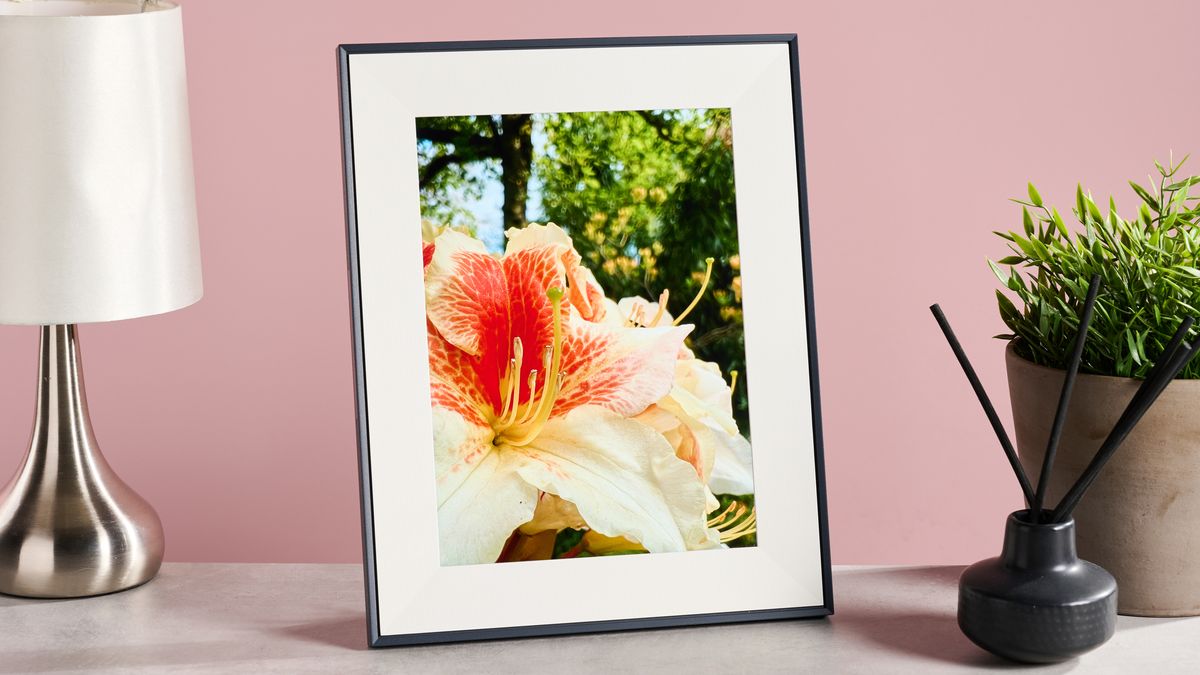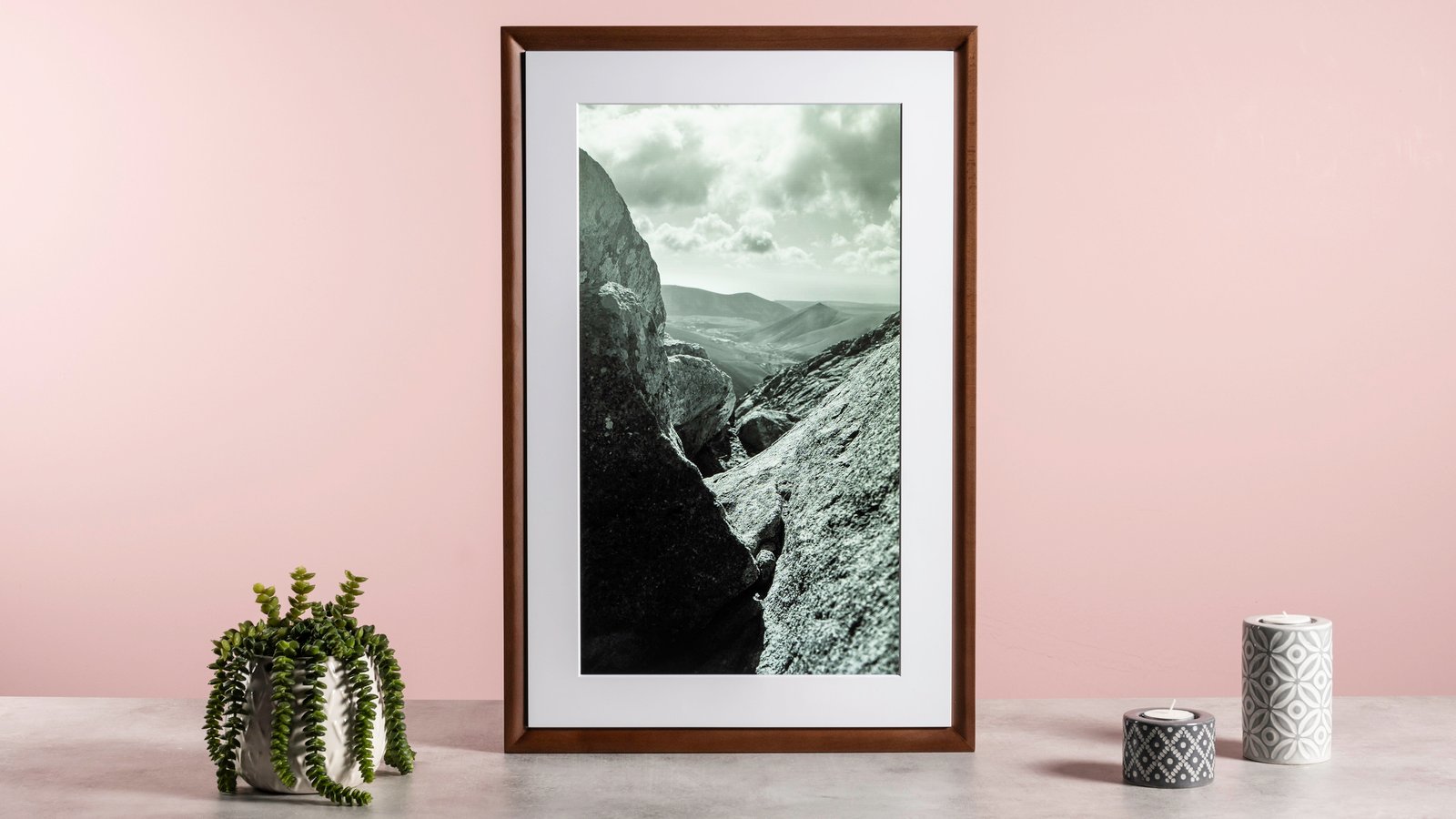If you take as many photos as I do, a digital photo frame is a fantastic purchase. Rather than leaving your snaps gathering metaphorical dust on your phone or SD card, it allows you to bring snaps into your home without the faff or expense of printing them all out. But before picking one up, there’s one thing I’d urge you to bear in mind – bigger does not always equal better.
In the year I’ve spent reviewing digital photo frames for TechRadar, I’ve tested a whole load of frames and have gone hands-on with some of the best examples out there. However, the more I’ve tested and dug through the specs of the best digital photo frames on the market, the more I’ve come to appreciate that the most expansive frames on the market aren’t always those that offer you the best image quality.
At the more premium end of the market, your boosted spend increasingly goes on larger and larger screen sizes. But while these huge frames look like they’re giving you loads of screen estate, this can be something of a false economy, as you’re not necessarily getting better image reproduction in return.

Why bigger digital photo frames aren’t always better
The main reason that larger screens don’t necessarily translate to better-looking photos is that most brands peg their digital photo frames at fairly similar resolutions… regardless of how big their screens may be. Apart from the odd exception – like the true 2K Pexar digital photo frame from Lexar – few frames go above 1080p. As a result, the mileage you’ll actually get out of that 1080p resolution will vary wildly.
Given that many screens contain the exact number of pixels, each pixel in the smaller screens is actually significantly smaller. A 1080p screen stretched over a massive 25 inches isn’t remotely as high definition as the same 1920 x 1080 pixels squeezed into a diminutive 10-inch frame. This means that smaller frames often give you far crisper, higher-res looking photos, despite generally being available for a lower price.

Take the Aura Aspen – it’s 1600 x 1200 resolution sounds pretty puny compared to the Vieunite Textura’s 1920 x 1080. But when you consider it stretches that resolution over a relatively modest 11.8 inches compared to the Vieunite’s expansive 27 inches, its relative precision comes into focus.
In fact, the Aspen offers 169.49 pixels per inch (ppi), compared to the Textura’s significantly lower 81.59ppi – meaning the resolution listed in its specs doesn’t tell the full story.
In light of this, it’s often worth probing the specs of digital photo frames to be sure you know what you’re getting. Make sure you weigh up the size of each product’s screen in comparison to its resolution so you’re clear on how crisp it will make your photos. But don’t panic if you find the math confusing – our guide to the best digital photo frames can help you understand which frame will offer you the best picture quality for your investment.

Should you avoid large digital photo frames entirely?
So does that mean there’s no place in your home for larger frames? Not at all. In fact, in the right context, you may not even notice the difference.
The benefit of big screens is they’re, well… bigger. That means you’ll most likely view them from much longer viewing distances. Unlike the small frame you might have on your desk or beside your couch, larger frames are designed to be wall-mounted and viewed from across the room. Essentially, it’s the same logic that means your 4K TV can get away with much lower pixel density than your 4K smartphone – because both screens occupy about the same area of your visual field.
I’ve lived with the truly Brobdingnagian 27-inch Netgear Meural Canvas II for well over six months now. Despite its 81.59ppi pixel density being thoroughly thrashed by the super-fine 212ppi offered by the smaller Pexar digital photo frame, I’ve found it’s a great way to show off my favorite snaps in my living room.
When they’re viewed from an equal distance, the Canvas II definitely looks less sharp than the 11-inch Pexar, but when one is viewed from 12 inches away and the other from six feet, the effective resolution of each looks much more even.
So, rather than assuming bigger automatically equals better or banishing huge digital photo frames from your home entirely, the important thing is to be more intentional about the size of the frame you select.
Want a frame to hang in a narrow hallway or to sit on a bedside table? Then plump for the highest pixel density you can get. Looking for a statement piece to adorn the wall of your spacious living room? Then it’s well worth going for the largest frame you can afford.




